Reassembling Broken Buildings With Aaron S Moran
- STICK*

- Aug 12, 2020
- 5 min read
Aaron S Moran is an artists who works in a medium that some might call simply call sculpture. However, viewing it with such a sterile definition wouldn't do the work justice. This becomes obvious when you have the fortune of coming across a simple piece made from stacked stones, or a gradient of leaves in real life, or on an Instagram story. Only then does the ephemeral and unsanctioned nature of the order he carefully crafts from demolished buildings, stones, flowers and chain link fences become obvious.
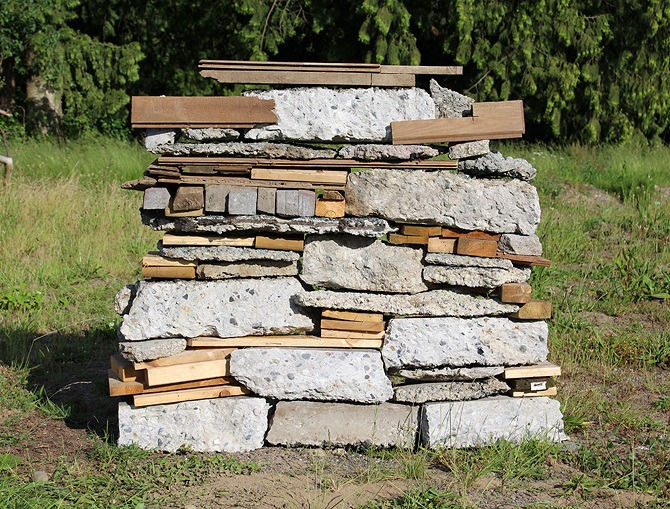
Stick* began as an exploration of sanctioned and unsanctioned street art in Vancouver, but artists like Aaron don't fit that narrow band of murals, graffiti, or wheat-pasting. Instead his work uses both materials from public spaces and is created in public spaces. Though the work is unsanctioned, it would be hard to classify it as vandalism. As a result Aaron has tapped into an interesting way of engaging public spaces and creating objects that could be considered "street art."
Aaron is taking part in a pop-up by a group called The Art Shop on August 13 - 18, 2020 from 11:00 am to 7:00 pm daily at 348 Water St. He took some time to speak with us about how he conjures order from broken buildings and how the concept of play is key to creating.
***
Can you tell us a bit about yourself and your work?
I am an artist working in the Fraser Valley and Metro Vancouver. I make artwork almost exclusively from reclaimed materials that I gather during walks through back alleys, vacant lots, and abandoned suburban houses. I work both in-studio and in-situ. Most of the work falls into the category of either assemblage, or photography documenting site-specific interventions.
You have a show coming up. What’s the focus of that show and how are you connecting your work to public spaces while being inside?
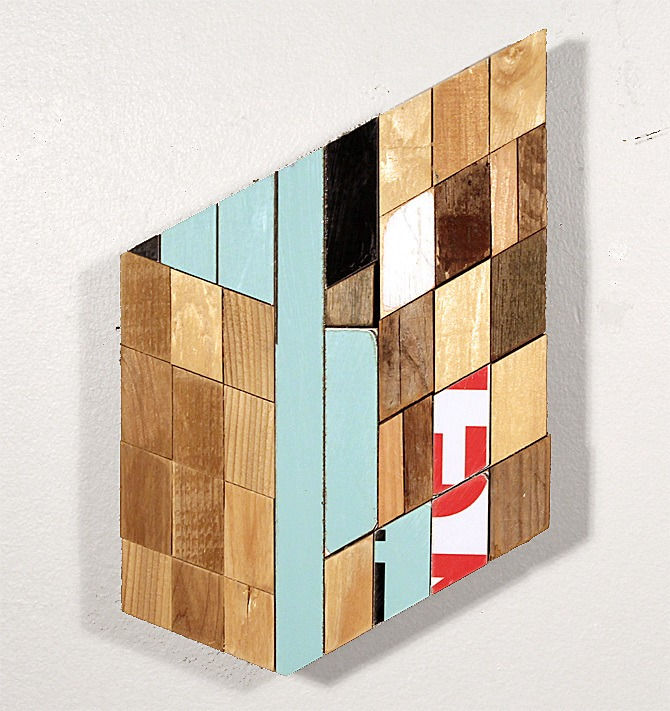
I am included in a group exhibition by the ‘The Art Shop’, who have secured a pop up space in Vancouver’s GasTown. Their mandate is to exhibit aesthetically driven, accessible work in a welcoming environment. I am exhibiting a group of assemblages that respond to the industrial architecture of the space. My work includes heavily distressed wood, chipping paint, and raw cedar. The space is made of red-brick, exposed wood beams, and metal framing. The materials I used were actually gathered from public space (including demolished buildings), making the exhibition context quite fitting.
Your Instagram stories are wonderful. Are you constantly scavenging and creating sculptures?
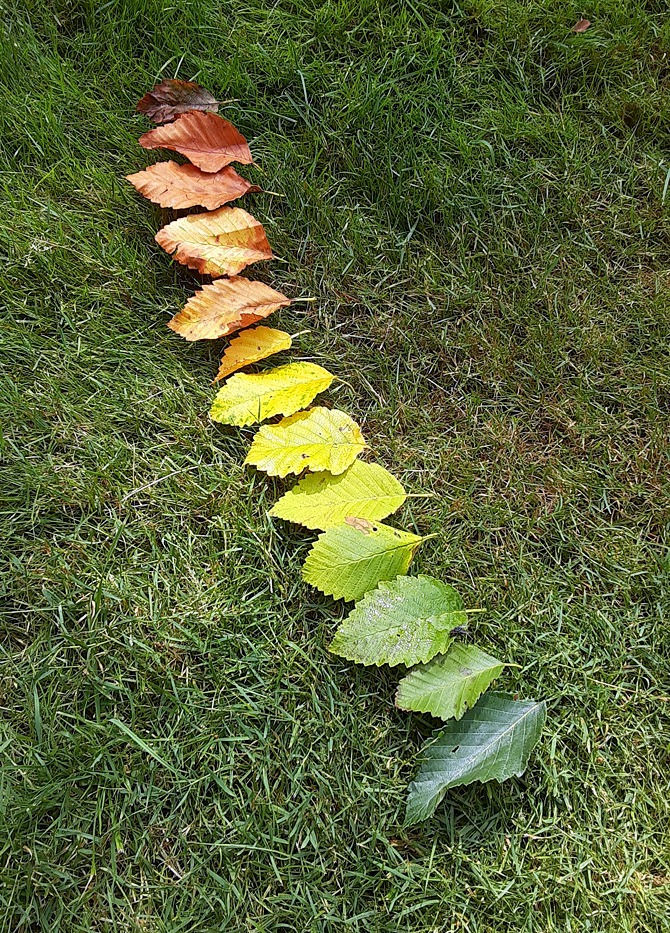
Yes, whether in a park, in the city, in the suburbs, or beyond, I am always looking to make something. I feel like making work in-situ connects me to the space I happen to be in. Instagram stories are a good way to document the process of exploration, gathering, and making. It really demystifies the process, and I would hope, shows the importance of ‘play’ in art making. In other cases, I collect discarded wood during walks that eventually make their way into studio-based sculptures.
People often think street art is limited to statues, graffiti, murals, or... Banksy. Are those categories limiting?
That is a very good question, especially since my public work does not fall into any of those categories. I think the main thing that links all of those kinds of art is the thought that the work will be permanent, or there for a long time. They are claiming space for as long as they occupy it. I would propose that public art does not have to be permanent, and that once artists (and audiences too) accept that public art can be temporary, or can change during its duration, the door is open to more possibilities. I make public work that may never be seen (it’s often on fenced off vacant lots, or out in the forest). I feel complete freedom to play, experiment, and work with non-archival materials. I would still call my work public art because it exists outside of a gallery and is accessible to anyone (they just have to find it).
During COVID we’ve all had to place more value on space. That’s pushed people into the outdoors to eat, hang out and just generally live. How can art play a role in this push to spend time engaging with public space?
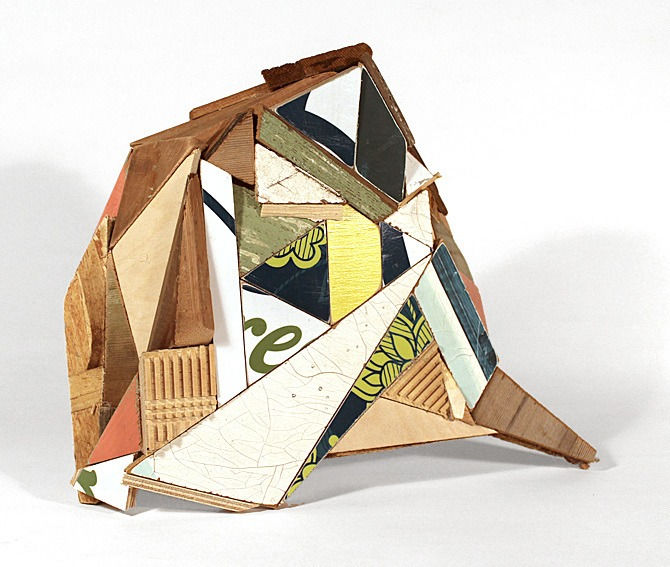
I would return to the idea ‘play’. The act of art making can be fun, bring people together, and make them feel more connected to a space. I think most people take art too seriously, which prevents them from enjoying the process.
How can cities and festivals create better spaces for diverse art in public spaces? Or does that even matter is it more about people just going and doing it?
I think there is room for big projects like commissioned murals and public sculpture, but I like the idea of pop-up space. If the work is always changing, or is temporary, the stakes are lower. The opportunity for more diverse projects and experimentation happens. That being said, unsolicited art that occurs without permission is vital for a vibrant public art culture. If I had to get permission from every space I ‘trespassed’ on, or the materials I’ve gathered from sites, I would have nothing to show.
You have your own zine called “Poor Quality” can you tell us about that?
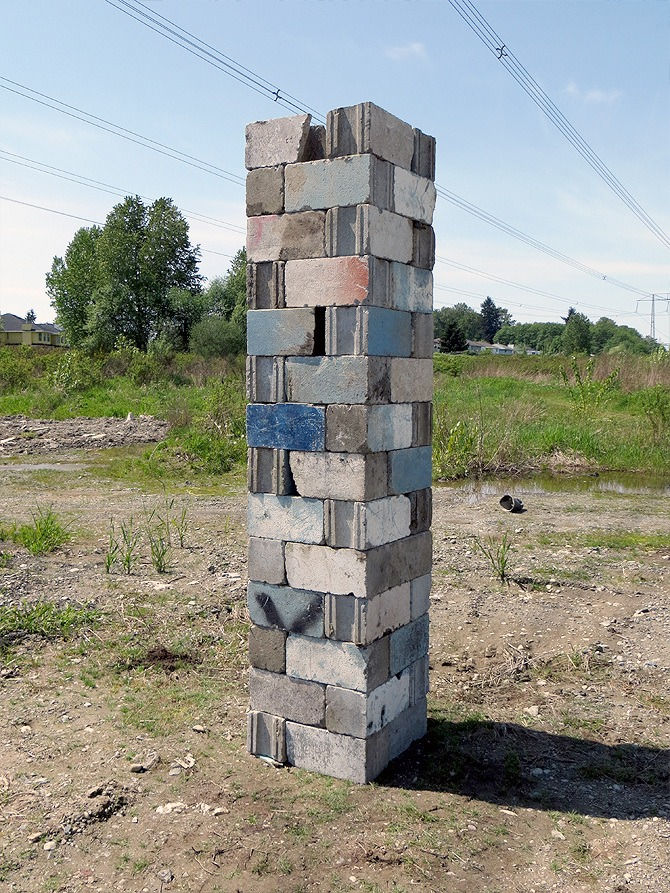
Poor Quality is a publishing project that I started in 2018. It was initially a way to gather together and publish work that I do outside of sculpture such as writing, collage, drawing, and photography. Quite soon after, I also started to publish projects from artists/writers whose work I admire. I see it as a way to create tangible art objects that can be easily distributed in real life. Most of the work in the portfolio is thematically linked by themes such as everyday aesthetics, cataloguing, and the built environment. In 2019, Poor Quality was invited to produce a project for the Vancouver Art Book Fair (called Bibliocache) that gathered/commissioned zines from artists residing in B.C., with an emphasis on inviting people who may have never explored the book format before.
When COVID hit, Poor Quality got derailed because I couldn’t get the printing or shipping done. I had to take down the web shop, and am only now about to restart the project.
What are some of your dream projects for you? Any other upcoming projects you’re working on for the upcoming year.
A dream would be access to a pre-demolition building with free range to make interventions within the space. For the next year, I really want to keep exploring and finding new public spaces to work within. I am feeling a big push toward working with natural materials these days and would like to continue down that path. I think the short term goals also include getting my publishing back on track and working with artists who energize me.
Who inspires you?
My two-year old daughter, because she reminded me that art should be fun, can be fleeting, and does not need more than an audience of one to be successful.
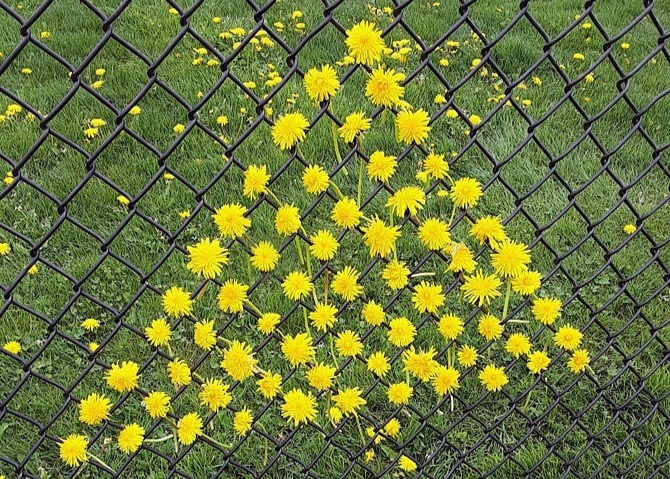
***
If you're looking for something to do check out Aaron's show at the the Art Shop (348 Water St) pop up on August 13 - 18. And the next time you're wandering around try creating your own unconventional public art.
Stick*


Comments